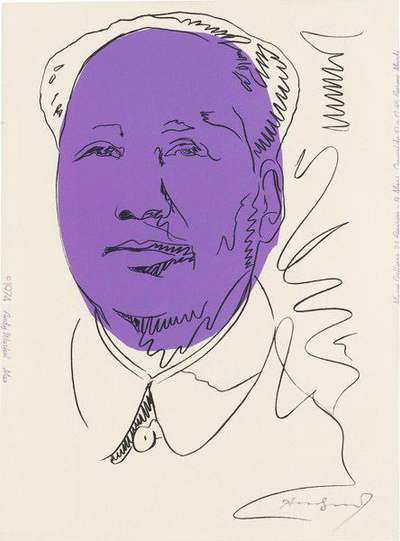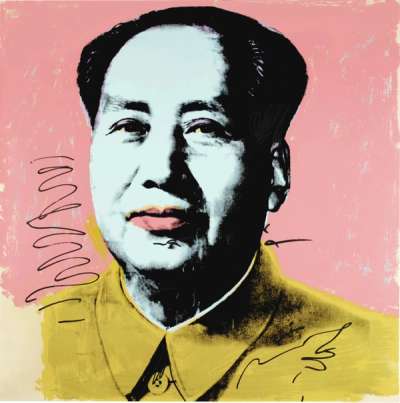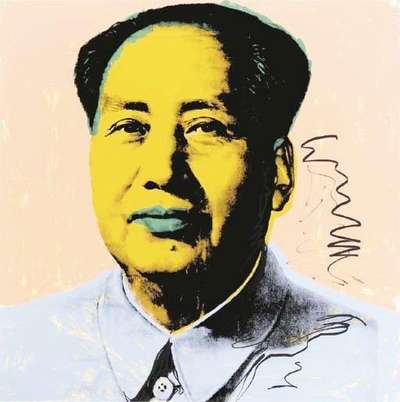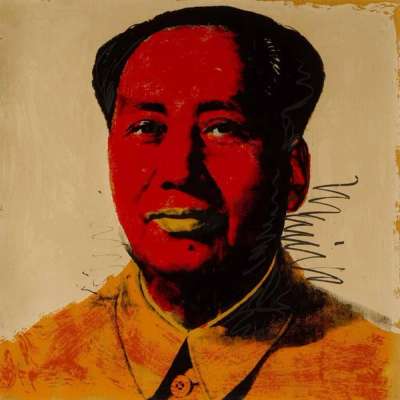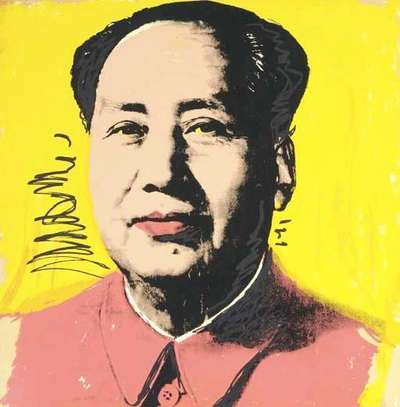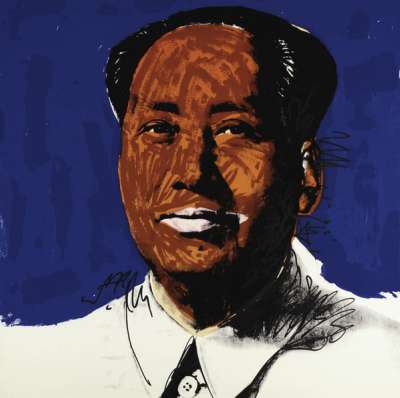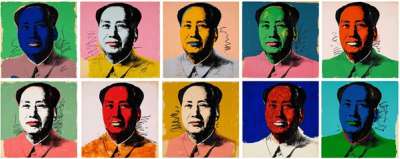
Mao (F. & S. II.99)

Mao (F. & S. II.99)
Signed Print
Andy Warhol
£30,000-£45,000Value Indicator
$60,000-$90,000 Value Indicator
$50,000-$80,000 Value Indicator
¥290,000-¥430,000 Value Indicator
€35,000-€50,000 Value Indicator
$300,000-$460,000 Value Indicator
¥5,620,000-¥8,430,000 Value Indicator
$40,000-$60,000 Value Indicator
AAGR (5 years) This estimate blends recent public auction records with our own private sale data and network demand.
There aren't enough data points on this work for a comprehensive result. Please speak to a specialist by making an enquiry.
Medium: Screenprint
Edition size: 250
Year: 1972
Size: H 91cm x W 91cm
Signed: Yes
Format: Signed Print
TradingFloor
Track this artwork in realtime
Watch artwork, manage valuations, track your portfolio and return against your collection
Track auction value trend
Auction Results
| Auction Date | Auction House | Location | Hammer Price | Return to Seller | Buyer Paid |
|---|---|---|---|---|---|
| March 2025 | Sotheby's London | United Kingdom | |||
| September 2024 | Phillips London | United Kingdom | |||
| September 2024 | Christie's London | United Kingdom | |||
| April 2024 | Christie's New York | United States | |||
| December 2023 | Sotheby's New York | United States | |||
| November 2023 | Stockholms Auction House | Sweden | |||
| September 2023 | Phillips London | United Kingdom |
Meaning & Analysis
Andy Warhol’s print Mao (F. & S. II.99) from his Mao series (1972) features a portrait of the Chinese communist leader Mao Zedong in bold colour contrasts. As one of the most famous figures of the 20th Century and a ubiquitous icon of political and cultural power, Mao was the ideal subject for Warhol to explore his fascination with the mechanism of fame.
Much like Warhol’s earlier screen prints of Elizabeth Taylor and Marilyn Monroe, Mao (F.& S. II.99) is rendered in bold, saturated colours that ironically transforms the powerful statesman into the Communist equivalent of a stylish 1970s pop icon. The photograph that Warhol used was taken from a publication called the Little Red Book that contained key Maoist ideologies. It was recognised to be the official image of Chairman Mao and was widely circulated as a propaganda tool of the Communist Party. Set against the backdrop of the Cold War and President Richard Nixon’s controversial visit to China to meet Chairman Mao in 1972, Warhol’s portrait is decidedly political. At odds with the original photographic image, the artist playfully shows Mao with a bright blue face, green lips and green tunic, as though to emphasise the artificiality of the image.
Not only does this destabilise the intimidating, propagandistic status that Mao tried to uphold, but Warhol reveals that this image is a piece of mass-media and consumerism. Warhol directly compares the controlled propagation of official images in communist China to the American capitalist machine of consumerism, fashion kitsch and advertising.
Andy Warhol was a leading figure of the Pop Art movement and is often considered the father of Pop Art. Born in 1928, Warhol allowed cultural references of the 20th century to drive his work. From the depiction of glamorous public figures, such as Marilyn Monroe, to the everyday Campbell’s Soup Can, the artist challenged what was considered art by blurring the boundaries between high art and mass consumerism. Warhol's preferred screen printing technique further reiterated his obsession with mass culture, enabling art to be seen as somewhat of a commodity through the reproduced images in multiple colour ways.
